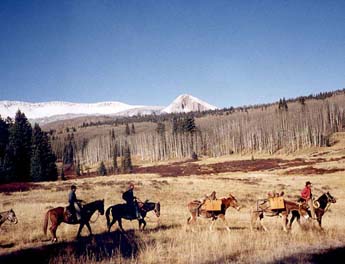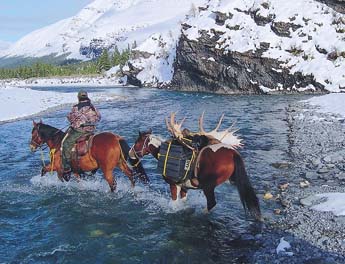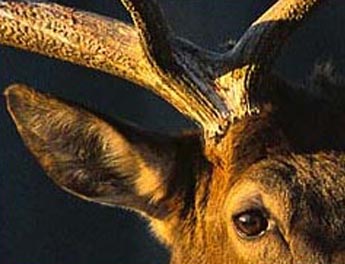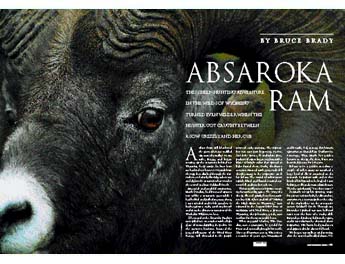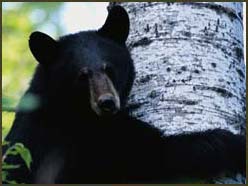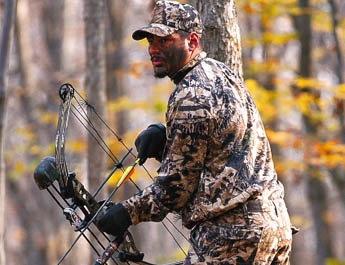Having hunted for more decades than I care to admit, I have plenty of memories-some good, some not so good. More than a few of the latter have occurred when I was atop a horse. I suppose I’ve ridden several hundred horses, including a half dozen of my own. I learned early on that a horse’s name is a profound indication of its personality. The first horse I ever rode, some 40 years ago, was named Panic. It also happened that this confounded beast shared my first-ever mule deer hunt. What should have been an awesome experience turned into a rodeo that had no spectators other than me and a couple of hunting buddies. Not only did Panic buck me off nicely a time or two, but he also threw my first muley, which was lashed securely to his saddle-or so I thought. Having said that, I must admit that most of my horseback hunts have been uneventful. That’s the way I like them: the more boring, the better.
Horses are of two major uses to hunters-to bring us to where the game is, and to transport game out of the woods. Most horseback hunting occurs in the West, where access into the mountains can be difficult. Of all the Western big-game species, elk are best suited to horseback hunting. Elk typically live in a vast, unroaded landscape, and their size makes them particularly difficult to move out of the woods.
First-time horseback hunters often feel intimidated. They wonder about their ability to control the animal and don’t know what to expect when they’re in the saddle. When you’re in that leather seat, you realize that the animal that carries you can easily hurt you. It’s a matter of trust.
Here’s the typical scenario when the big day arrives and you find yourself at the trailhead. You unload your gear from a vehicle, and the outfitter, guides and perhaps a wrangler load the horses. Gear is weighed so it will be equally balanced on the packhorses, and you’re given a short course in riding. It’s an easy session in which you quickly learn how to steer, stop, start and back up your horse. Then you’re assigned to a horse and fitted to the stirrups. If the stirrup length isn’t correct, your knees and legs might protest.
As you’re riding, the guide might instruct you to dismount and lead your horse down steep trails. This is a blessing, because you’ll be able to work out the kinks and minor cramping in your legs. The soreness typically disappears after you walk around for a few minutes.
[pagebreak] The Fear Factor
Some mountain trails can be very scary, especially if they’re etched into the side of a cliff or on a slope that seems nearly perpendicular. That’s where the trust comes into play. When I first rode on perilous trails, a veteran cowboy shared some words of wisdom: A horse has four strong legs to keep itself balanced, and the animal doesn’t want to fall any more than you do.
Riding in the dark is no doubt one of the most trying things you can do in the saddle. I’m talking about when it’s pitch black-“slap-up dark,” as a Texas buddy calls it. Any outfitter worth his salt will have you in the saddle and out of camp an hour or more before the first hint of light. If it’s not cloudy and you can see the stars, or better yet a moon, you’ll be okay. But if clouds are heavy, prepare for a fascinating sensation as your horse unerringly moves beneath you while you are literally unable to see your hand a few inches from your eyes. Thankfully, horses have superb night vision, but you need to keep your faith and trust in them.
I’ve ridden many horses in the pitch dark, but the most memorable time took place in what I called the “forest of terror” in Idaho’s Selway Wilderness. When shooting hours were over, my pal and I had a 10-mile ride back to camp, the equivalent of about three hours in the saddle. Much of the trip was along a dangerous trail, and I was glad I couldn’t see it in the dark. At one point a tree limb was perfectly located so it uncannilyy swept off my hat; in another place a log in the trail caused my horse to make a flying leap over it. These obstacles were a total surprise, and of course I uttered some unprintable epithets. Using a flashlight to help you see isn’t an option, since it will interfere with your mount’s night vision.
Some hunters travel west and rent horses. If you do this, be aware of the horse’s training and personality, since each one is different. Be aware that some are unwilling to cross even a tiny creek; some will bolt at an odd-shaped stump or log; some will jump over a log rather than walk over it; and some are slowpokes that refuse to stay up with the other horses, trotting intermittently when they think they’re left behind. Worst of all is the horse that is terrified of the sight of a dead elk or deer or the smell of fresh meat. You can get seriously hurt if a little rodeo ensues. Prevent these problems by asking the owner about each horse’s idiosyncrasies. If no one in your party is horse savvy, it’s best to forget horses on your own. Hire a wrangler to pack your game out for you.
The bottom line, however, is that there’s really no reason to fear horses. In all my experiences, I’ve had a couple of minor injuries, all due to my own poor judgment. Once my horse slipped and rolled on me on an icy trail in the dark, spraining my ankle. Another time a horse went down in a mucky bog, taking me with it and bruising a couple of my ribs. In each case I shouldn’t have been riding. Whenever in doubt, walk your horse.
To me, there’s a special thrill when I ride the Western mountains. As a kid raised in the East, I envied the television cowboys who galloped across the screen. Though I’ve satisfied that curiosity, I still haven’t had my fill of riding hunting horses. And I expect I never will.
For information on Jim Zumbo’s books, go to www.jimzumbo.com.
Gear for hunting from the saddle
- Leave the cowboy hat at home. A wide brim can catch on overhanging brush and, unlike Filson’s Insulated Wool Timber Cap, doesn’t have pulldown flaps to protect your ears from the cold. ($39.50; 800-297-1897; www.filson.com)
- Schnee’s 13-inch Hunter II boots have an inner lining for warmth and an aggressive tread for walking vertical terrain, yet they’re narrow enough to fit in standard stirrups. ($175; 888-922-1510; www .schnees.com)
- Cabela’s Ultra Pack rain suit will easily fit behind your saddle for fast access. (About $140 for pants and jacket; 800-237-4444; www.cabelas.com)
- Elkskin gloves from the Churchill Glove Company are designed to take whatever abuse the trail can dish out. ($32.75; 360-623-8184; www .jrcglove.com)
